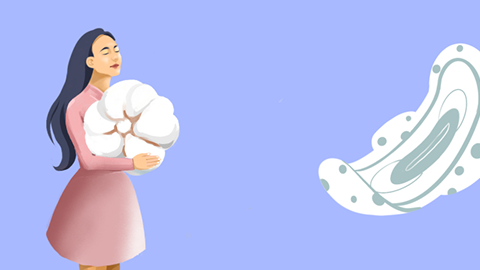What should I do if my lower back hurts during menstruation?
In general, waist pain during menstruation may be caused by factors such as hormonal fluctuations, abnormal uterine position, pelvic inflammatory disease, endometriosis, and adenomyosis. The symptoms of waist pain can be relieved through general treatments and medication under a doctor's guidance. If discomfort persists, timely medical attention is recommended. Detailed explanations are as follows:

1. Hormonal fluctuations
During a woman's menstrual period, fluctuations in estrogen and progesterone levels can lead to pelvic congestion, which compresses surrounding nerves and causes waist pain. Maintaining a regular sleep schedule, avoiding staying up late, and keeping the endocrine system stable can help. Appropriate exercise can also promote blood circulation, reduce pelvic congestion, and help alleviate waist pain.
2. Abnormal uterine position
Excessive anteversion or retroversion of the uterus may alter the positional relationship between the uterus and surrounding tissues. During menstruation, uterine contractions can intensify the pulling and compression of surrounding tissues, causing waist pain. Simple yoga poses, such as cat-cow and butterfly pose, can help strengthen pelvic floor muscles, improve uterine position, and alleviate symptoms of waist pain.
3. Pelvic inflammatory disease
Pelvic inflammatory disease is often caused by postpartum or post-abortion infections or poor menstrual hygiene. Inflammation stimulates pelvic tissues, causing pelvic congestion and adhesions. During menstruation, the inflammatory response worsens, irritating the nerves in the lumbosacral region and causing waist pain. Symptoms may also include lower abdominal pain, fever, and increased vaginal discharge. Under a doctor's guidance, patients can use medications such as cefixime capsules, metronidazole tablets, and gynecological qianjin tablets for anti-inflammatory treatment to relieve discomfort.
4. Endometriosis
Endometriosis may be related to the presence of endometrial tissue outside the uterine cavity. During menstruation, ectopic endometrial tissue undergoes cyclic bleeding, which irritates surrounding tissues, causing inflammation and adhesions that lead to waist pain. Symptoms may also include progressively worsening dysmenorrhea, pain during sexual intercourse, and menstrual irregularities. Under a doctor's advice, patients can use medications such as ibuprofen sustained-release capsules, gestrinone capsules, and danazol capsules to inhibit the growth of ectopic endometrial tissue and relieve waist pain.
5. Adenomyosis
Adenomyosis is mainly caused by congestion and cyclic bleeding of ectopic endometrial glands within the uterine muscle layer. This condition may cause spasmodic contractions of the uterine smooth muscle, resulting in waist pain. It may also be accompanied by increased menstrual flow and prolonged menstruation. Patients should follow medical advice to use medications such as indomethacin enteric-coated tablets, dienogest tablets, and mifepristone tablets for treatment, which can help alleviate symptoms.
In daily life, it is important to maintain good menstrual hygiene by changing sanitary pads frequently. Excessive fatigue and strenuous exercise during menstruation should be avoided. Keep the waist area warm and prevent cold exposure.




